Suktipol Kiatthaveephong
A Pilot Study on Visually-Stimulated Cognitive Tasks for EEG-Based Dementia Recognition Using Frequency and Time Features
Mar 05, 2021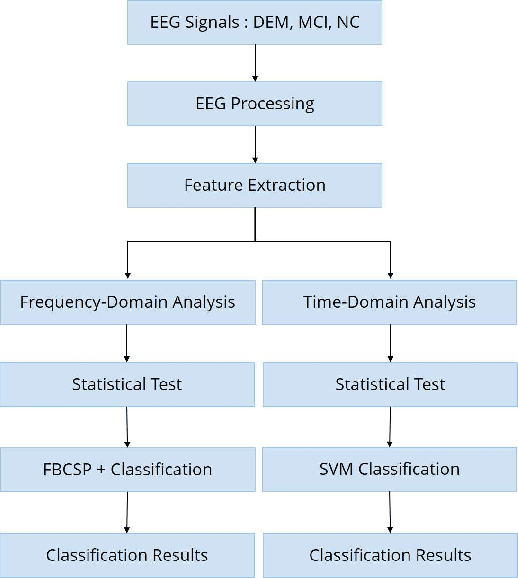
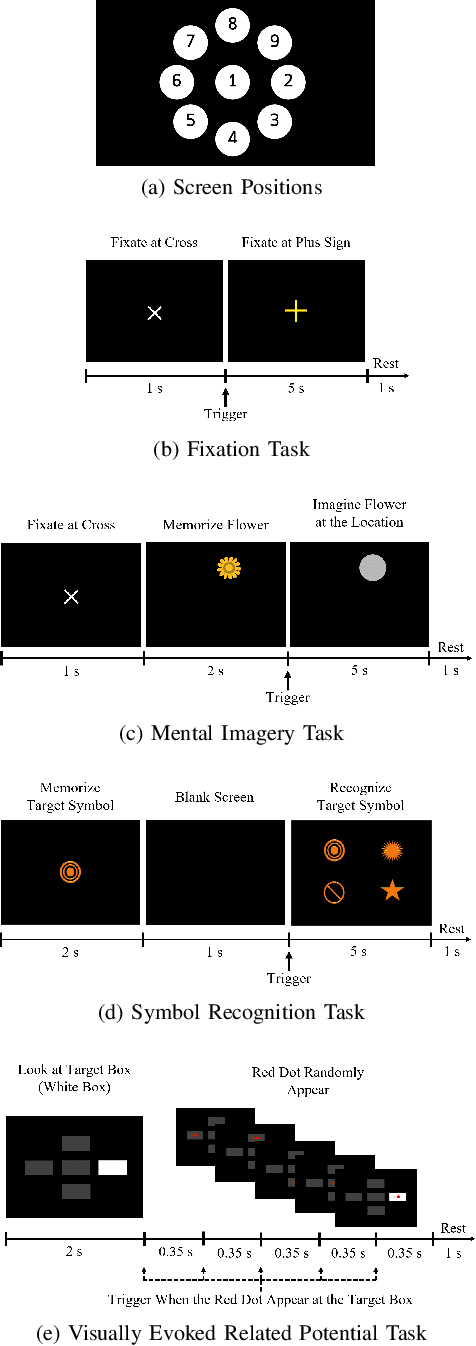
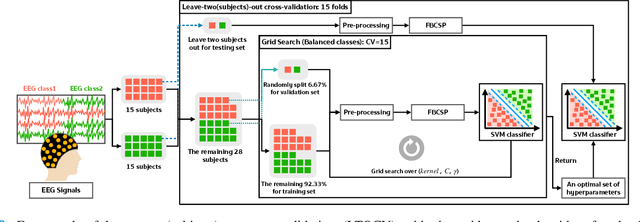
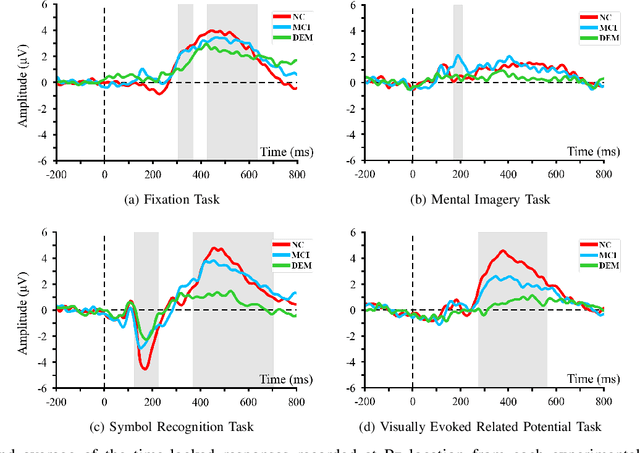
Abstract:Dementia is one of the main causes of cognitive decline. Since the majority of dementia patients cannot be cured, being able to diagnose them before the onset of the symptoms can prevent the rapid progression of the cognitive impairment. This study aims to investigate the difference in the Electroencephalograph (EEG) signals of three groups of subjects: Normal Control (NC), Mild Cognitive Impairment (MCI), and Dementia (DEM). Unlike previous works that focus on the diagnosis of Alzheimer's disease (AD) from EEG signals, we study the detection of dementia to generalize the classification models to other types of dementia. We have developed a pilot study on machine learning-based dementia diagnosis using EEG signals from four visual stimulation tasks (Fixation, Mental Imagery, Symbol Recognition, and Visually Evoked Related Potential) to identify the most suitable task and method to detect dementia using EEG signals. We extracted both frequency and time domain features from the EEG signals and applied a Support Vector Machine (SVM) for each domain to classify the patients using those extracted features. Additionally, we study the feasibility of the Filter Bank Common Spatial Pattern (FBCSP) algorithm to extract features from the frequency domain to detect dementia. The evaluation of the model shows that the tasks that test the working memory are the most appropriate to detect dementia using EEG signals in both time and frequency domain analysis. However, the best results in both domains are obtained by combining features of all four cognitive tasks.
MIN2Net: End-to-End Multi-Task Learning for Subject-Independent Motor Imagery EEG Classification
Feb 07, 2021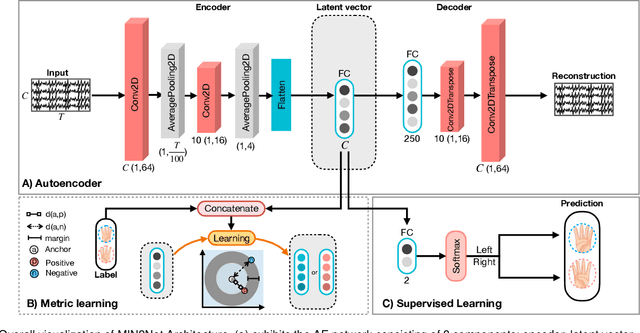
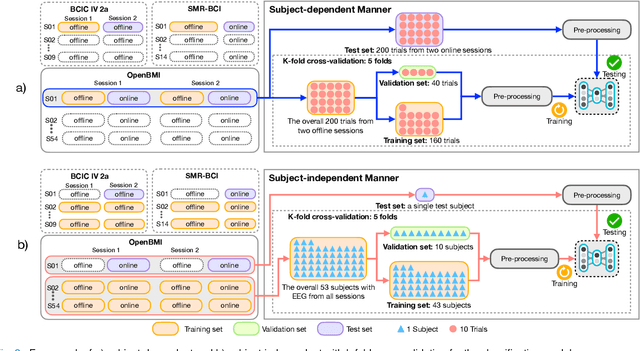
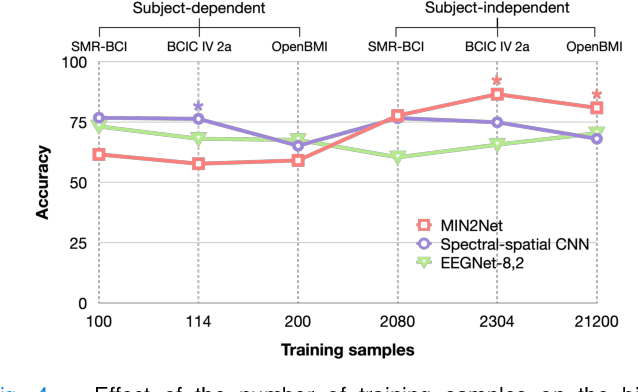
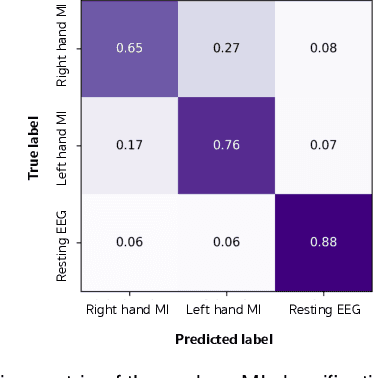
Abstract:Advances in the motor imagery (MI)-based brain-computer interfaces (BCIs) allow control of several applications by decoding neurophysiological phenomena, which are usually recorded by electroencephalography (EEG) using a non-invasive technique. Despite great advances in MI-based BCI, EEG rhythms are specific to a subject and various changes over time. These issues point to significant challenges to enhance the classification performance, especially in a subject-independent manner. To overcome these challenges, we propose MIN2Net, a novel end-to-end multi-task learning to tackle this task. We integrate deep metric learning into a multi-task autoencoder to learn a compact and discriminative latent representation from EEG and perform classification simultaneously. This approach reduces the complexity in pre-processing, results in significant performance improvement on EEG classification. Experimental results in a subject-independent manner show that MIN2Net outperforms the state-of-the-art techniques, achieving an accuracy improvement of 11.65%, 1.03%, and 10.53% on the BCI competition IV 2a, SMR-BCI, and OpenBMI datasets, respectively. We demonstrate that MIN2Net improves discriminative information in the latent representation. This study indicates the possibility and practicality of using this model to develop MI-based BCI applications for new users without the need for calibration.
 Add to Chrome
Add to Chrome Add to Firefox
Add to Firefox Add to Edge
Add to Edge